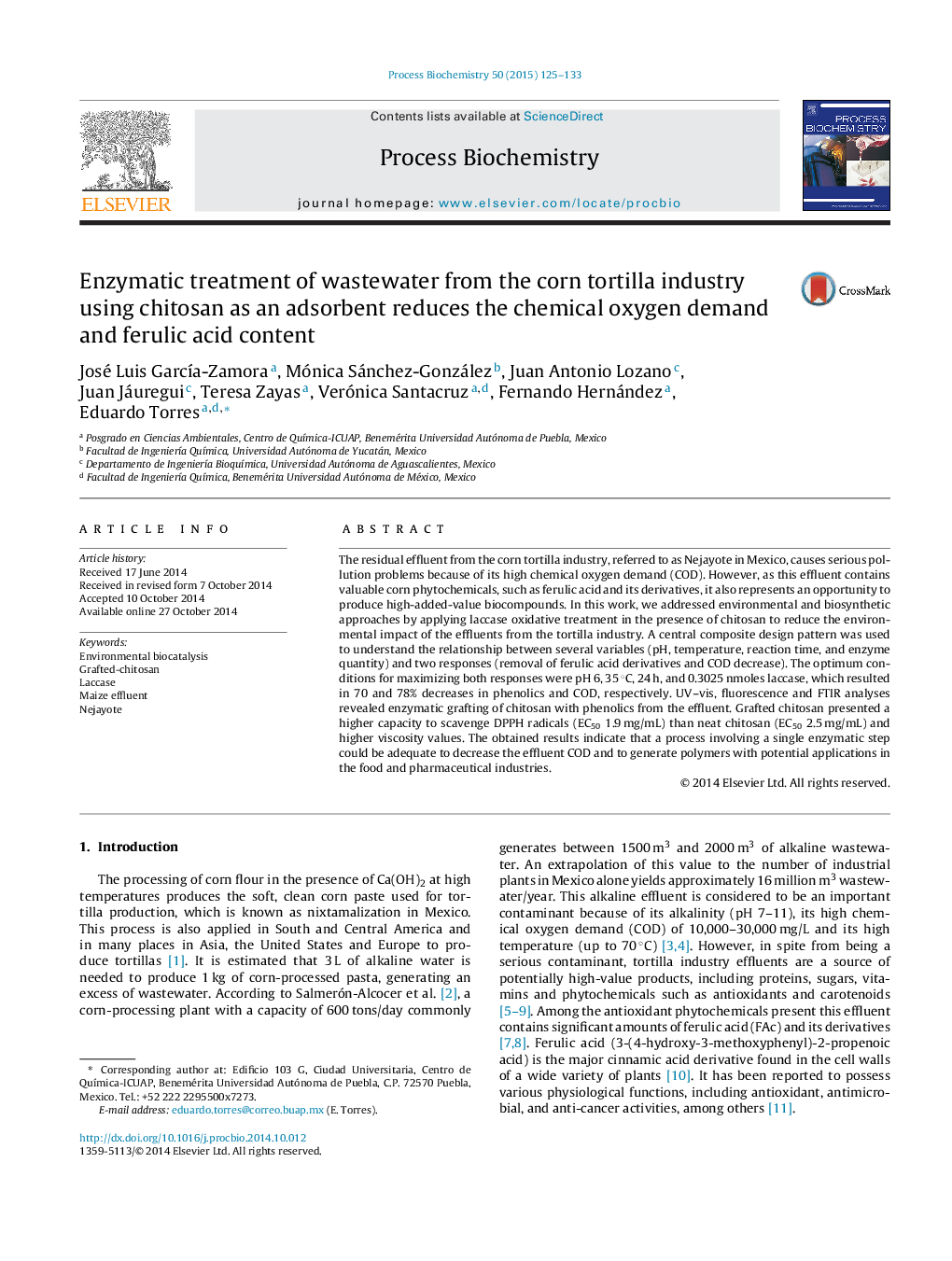| کد مقاله | کد نشریه | سال انتشار | مقاله انگلیسی | نسخه تمام متن |
|---|---|---|---|---|
| 34481 | 45027 | 2015 | 9 صفحه PDF | دانلود رایگان |
• High reduction in COD of maize effluent by enzymatic oxidation and adsorption.
• Grafted chitosan produced as value-added product.
• Grafted chitosan with higher antioxidant capacity and viscosity.
The residual effluent from the corn tortilla industry, referred to as Nejayote in Mexico, causes serious pollution problems because of its high chemical oxygen demand (COD). However, as this effluent contains valuable corn phytochemicals, such as ferulic acid and its derivatives, it also represents an opportunity to produce high-added-value biocompounds. In this work, we addressed environmental and biosynthetic approaches by applying laccase oxidative treatment in the presence of chitosan to reduce the environmental impact of the effluents from the tortilla industry. A central composite design pattern was used to understand the relationship between several variables (pH, temperature, reaction time, and enzyme quantity) and two responses (removal of ferulic acid derivatives and COD decrease). The optimum conditions for maximizing both responses were pH 6, 35 °C, 24 h, and 0.3025 nmoles laccase, which resulted in 70 and 78% decreases in phenolics and COD, respectively. UV–vis, fluorescence and FTIR analyses revealed enzymatic grafting of chitosan with phenolics from the effluent. Grafted chitosan presented a higher capacity to scavenge DPPH radicals (EC50 1.9 mg/mL) than neat chitosan (EC50 2.5 mg/mL) and higher viscosity values. The obtained results indicate that a process involving a single enzymatic step could be adequate to decrease the effluent COD and to generate polymers with potential applications in the food and pharmaceutical industries.
Figure optionsDownload as PowerPoint slide
Journal: Process Biochemistry - Volume 50, Issue 1, January 2015, Pages 125–133
